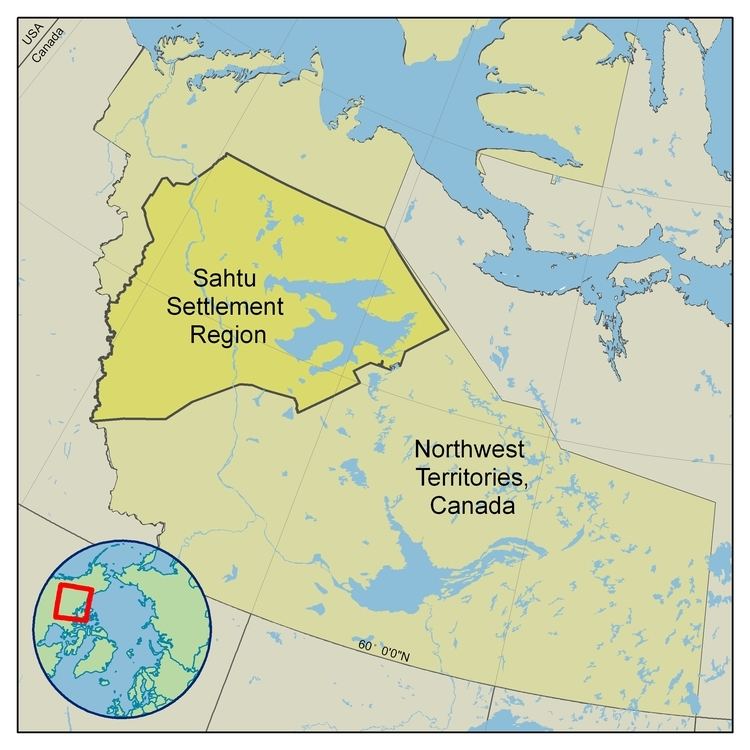 | ||
Disturbance impacts on streams within the sahtu
The Sahtú or North Slavey (historically called Hare or Hareskin Indians) are a Dene First Nations people of the Athabaskan-speaking ethnolinguistic group living in the vicinity of Great Bear Lake (Sahtú, the source of their name), Northwest Territories, Canada. The Sahtú peoples live in Colville Lake, Deline, Fort Good Hope, Norman Wells and Tulita which form the Sahtu Region of the NWT. The Dene of the region are represented by the Sahtu Dene Council who, in 1993, signed the Sahtu Dene and Metis Comprehensive Land Claim Agreement. Sahtú groups include the Hare Dene (K'ahsho Got'ine District, today: Colville Lake and Fort Good Hope), Bear Lake Dene (Déline District), and Mountain Dene (Tulit'a District). They call themselves also Ɂehdzo Got’ı̨ne (Trap People).
Contents
- Disturbance impacts on streams within the sahtu
- Ethnography
- Todays Sahtu Dene First Nations
- Language
- Notable Sahtu people
- References
Ethnography
An early description of Sahtú cultures is given in Alexander Mackenzie's journal of his voyage down the Mackenzie River to the Arctic Ocean in 1789.
Although there are close interrelationships among the Dene communities, they are culturally and linguistically distinct. The K’ahsho Got’ine (Hare(skin) Dene) are now centred in Fort Good Hope and Colville Lake. The Shita Got’ine (Mountain Dene) have joined with the K’áálǫ Got’ine (Willow Lake Dene) (they lived around K’áálô Tué - ″Willow Lake″, today known as Brackett Lake) in the community of Tulit’a. The Sahtúot’ine (Sahtú Dene or Great Bear Lake Dene) are named after Sahtú/Great Bear Lake, and are based in Deline. Métis people, descendents of relationships established between Dene people and fur traders, reside in all five communities of the region. The Hareskin Dene called themselves K'a so Got’ine/Katoo Got’ine ("big willow people") or K’ahsho Got’ine/K'áshot’ Got’ine (″big-arrowhead-people″, mistranslated as Hareskin people, an English rendering of Gahwié Got’ine - ″Rabbit(skin) People″).
The Déline community of the Sahtú Dene experienced great loss during Canada's participation in the Manhattan Project. The need for radioactive materials, (such as radium), to create atomic weapons was met with the deposits found near the Great Bear Lake. The Sahtú Dene were hired to transport the ore containing radium from the Northwest Territories to be processed in Ontario or the United States. Since much of the uranium that existed in Europe was under Nazi control, the radium deposits in Canada were vital to the creation of the first atomic bombs. Unaware of the radiation's effects, the Sahtú Dene used "cloth sacks" to transport the ore.
The number of deaths caused by radiation is disputed by the Government of Canada. The government report says that the people of Deline did not handle yellowcake but sulfur powder.
Ultimately, the devastating effects of radiation poisoning impacted the Déline community severely. A 1999 documentary by Peter Blow entitled Village of Widows detailed the experiences of the Sahtú Dene.
Today's Sahtu Dene First Nations
Sahtu Dene Council
Language
Sahtú speak the North Slavey language, which belongs to Northwestern Canada group of Northern Athabaskan languages.
